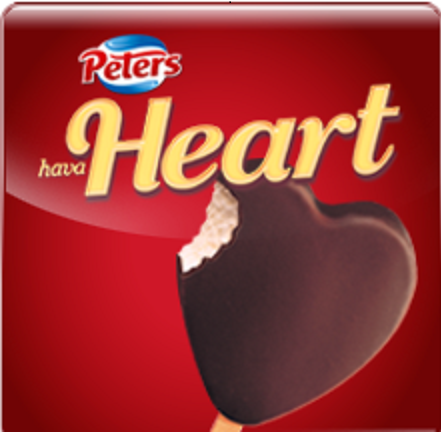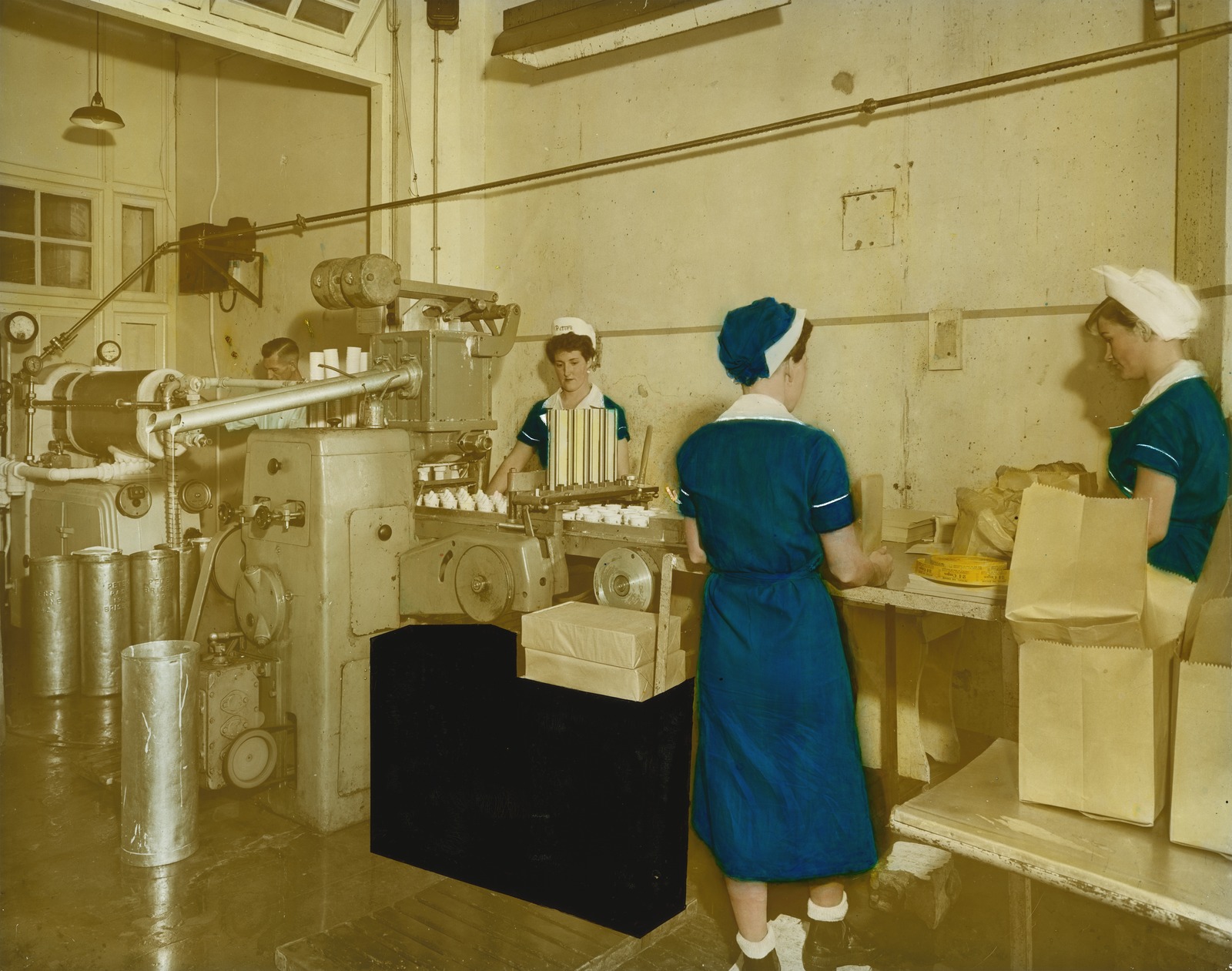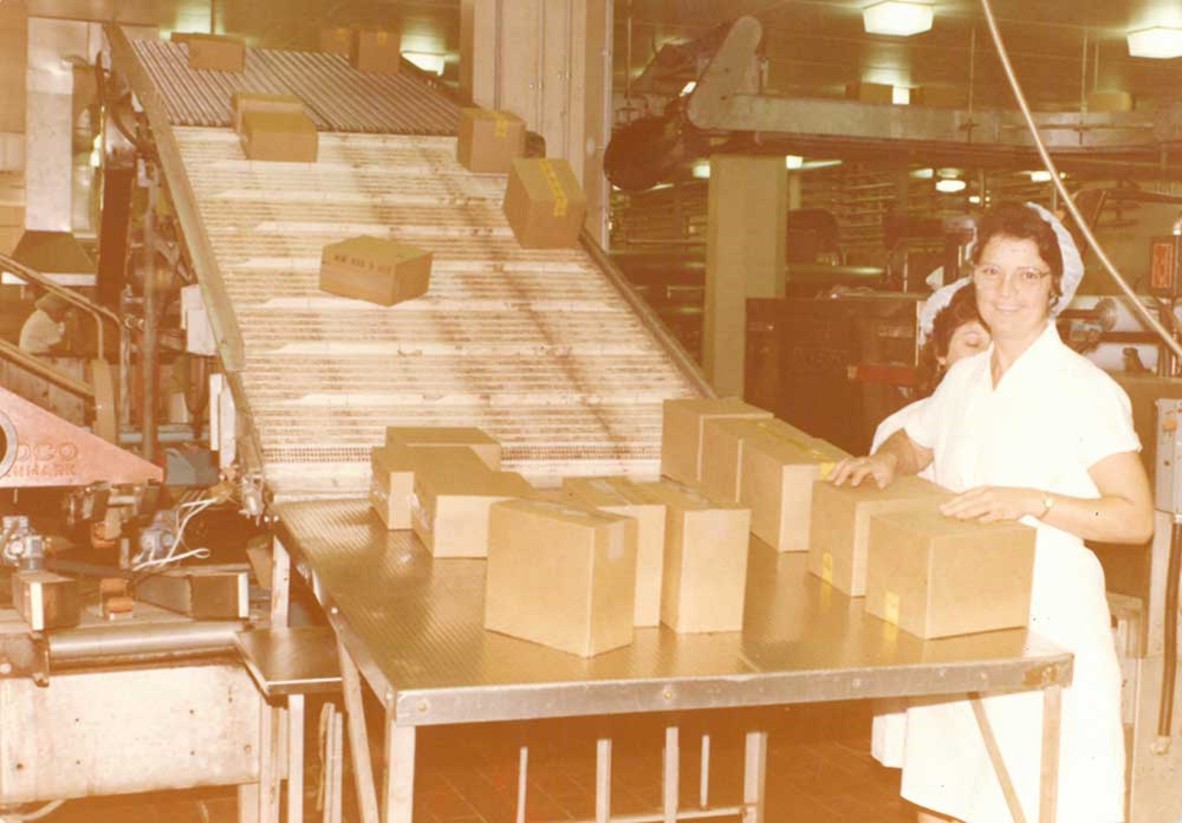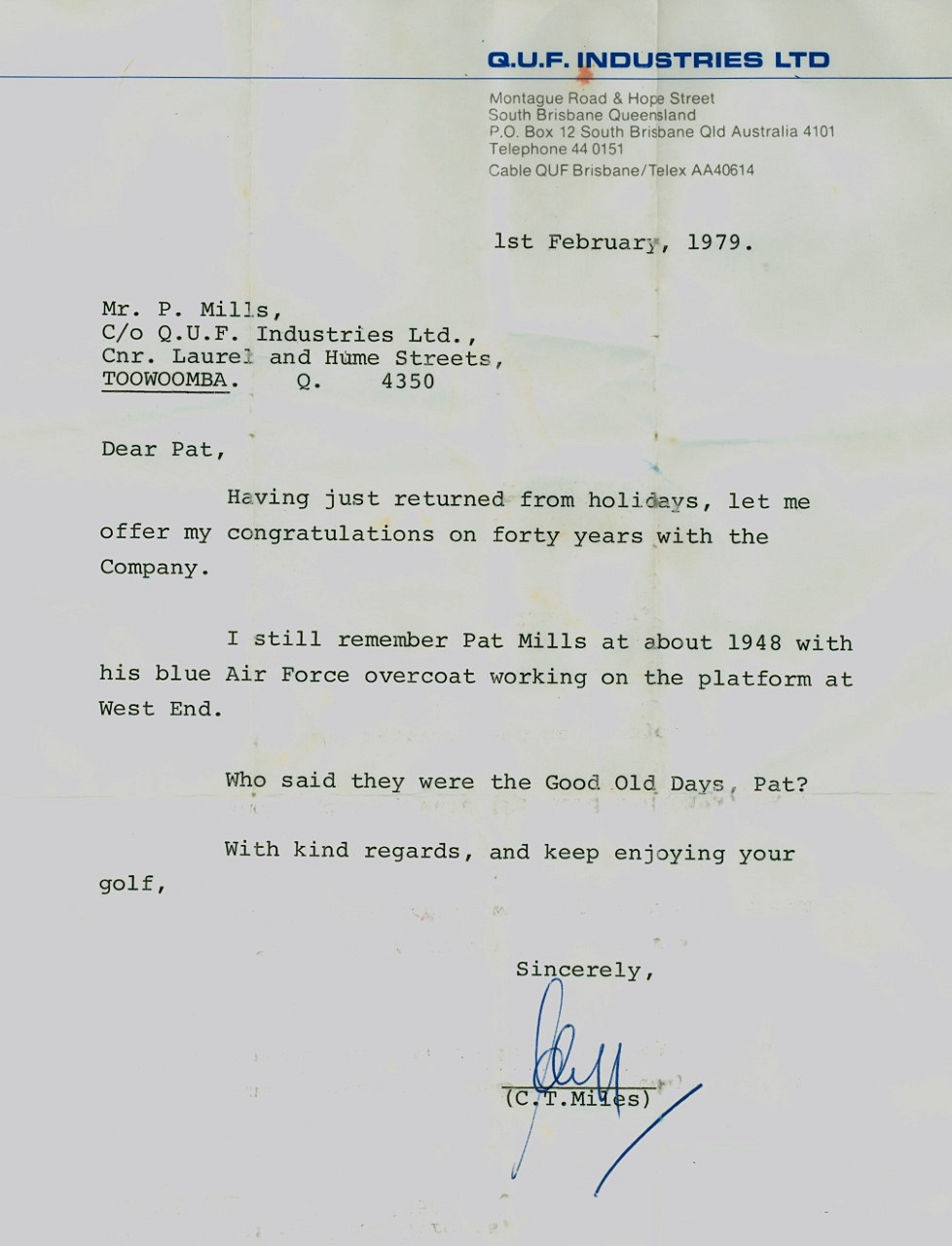Peters Ice Cream Factory: The Ice Cream for All Nations
By Tricia King, 2019 Place Making Fellow | 23 July 2020
Guest blogger: Tricia King, 2019 Place Making Fellow
Imagine your workday involved dreaming up a new ice cream flavour. Perhaps you’d receive a working brief from marketing with details about the target demographic or maybe a rough design idea but the rest was up to your imagination. This is what a workday looked like for Debbie Ryan and the other food technologists working at the Peters Ice Cream factory in West End. A thriving hub of innovation, Debbie and the team at the factory led the development on several iconic flavours which are still household names decades later including Frosty Fruits, Billabongs, Hava-Heart and, of course, the Drumstick. “It was quite an amazing place because now a lot of food products are developed overseas and the idea and concept is changed to contextualise it to Australia but we used to do our own research and development so it was really quite a unique place from that perspective,” she notes. Whilst the hours spent inventing the products was immensely rewarding to see creations move through from idea to production, by far Debbie’s favourite part of the process was taking ideas from the lab and trialling them on the factory floor, “because that’s when you got into the factory and you were working with all the people … and being part of that wider community”. It was this large and diverse team of multicultural staff which is truly what made Peters a success.

Banging the Drumstick is a State Library Placemaking Fellowship dedicated to exploring the stories from within the iconic building at 93 Boundary Street West End when it operated as the Peters Ice Cream factory. Today the site has been redeveloped into apartments and has a large central social forecourt at street level to welcome people to the building, and this total reinvention of the site - some 90 years after it was first built - will now see a new wave of families calling West End home. However, this concept of the site as a way to draw families to West End is certainly not new. Throughout the project so far and the stories we have heard, it is clear that bringing families to live and work in West End has always been one of the factory’s core missions.

Women workers on the production line at Peters Arctic Delicacy Company factory, West End, Brisbane. (State Library of Queensland collection)
Built on Kurilpa, land of the Jagera people, the site which Fred Peters chose to build his factory was centrally located in West End’s burgeoning industrial hub. In the early 1920s businesses like Thomas Dixon’s tannery on Montague Road and Tristam’s soft drink factory nearby on Boundary Street were established and the proximity of the area to trams and ferries made West End an ideal suburb to live and work. Former worker Scott Allison (who worked at the factory from 1989-1993) reflects upon the location noting it was a “very astute place to put the factory in both a transport and social sense." In his interview for the project Scott discussed the relationship of the factory to West End and its embracing of newly arrived migrants and workers of all skill levels, noting the harmonious welcoming of all ethnicities in the factory filtered out to the vibrance, feelings of safety and security, and enthusiastic involvement in the social and cultural aspects of West End. “I think that’s what made me the proudest to work there was having a wide range of people I could related to and talk to and listen to where they have come from."
In the mid 1930s West End was developing as a multi-cultural hub, most notably for Greek migrants but people from all across the globe were settling in West End to take advantage of the cheap accommodation and abundant employment opportunities. The Peters Ice Cream Factory became known as a place welcoming of all nationalities, genders and skill levels. Everyone who has told their story during this project has discussed how the perks of working with ice cream itself (read: lots of samples!) was secondary to the real joys of coming to work each day– the family of workers. Within the bricks and mortar of the iconic building and the myriad of flavours, it seems the real success of the factory was in its community of people. “The pay was not great but the pay wasn’t the reason for going there," Scott commented, "the reason for going there was that you were family and that’s a factor which seems to be lost on businesses these days with their focus on KPIs and it’s kind of soulless – there was a real soul to Peters." This active support in employing migrants and workers from all backgrounds throughout the factory’s history has clearly played a significant role in the rich multiculturalism which exists in West End today.

Darlia Loula Argyris at Peters Ice Cream Factory, West End Brisbane, ca. 1972. (Image courtesy of Peters)
Getting a job at Peters wasn’t outside of the reach of anyone. In the early years, it was as simple as walking up to the foreperson and asking for one or asking a relative who worked there. As such there were often whole families employed in various parts of the operation. Additionally, people often stayed employed at Peters for many decades. “Some people had been there ten, twenty, thirty years and that was all they knew and they loved it,” Scott said. Danny Mills spoke of his father Pat Mills who worked with Peters his entire life, starting when he was 14 in 1938 as a clerk in the stock area and working his way through various roles becoming a manager in the 1960s and moving to take over the Toowoomba site. “He just enjoyed it, he enjoyed all the people,” Danny said. He spoke to the credit of the managers for developing a community of workers – their insistence on being known by their first names, their presence in the factory both formally and informally as they mingled in the buildings’ canteen, and the fostering of social aspects of the factory such as the legendary Christmas parties. Danny Mills has kept a number of artefacts from his fathers’ over 50 years at Peters, including a letter from manager C.T. Miles which formally congratulates Pat for his 40 years of service but written with a highly personalised tone which talks of the ‘good old days’ and encourages Pat to keep enjoying his golf. Other clippings show Pat receiving a gold watch to honour the milestone.

Letter to Pat Mills, congratulating him on 40 years employment at Peters Ice Cream Factory signed by C.T.Miles dated 1 February 1979. (Courtesy of Danny Mills)
The stories and photographs from the factory so far highlight how building an inclusive, functional and productive workforce augmented the success of the product itself. These flavours which many of us remember from our childhood and still enjoy today were built by a global workforce whose presence and perspectives helped shape the West End community around them.
I look forward to sharing more stories during my Research Reveals talk in October later this year. Check State Library's What's On webpage for further details.
Comments
Your email address will not be published.
We welcome relevant, respectful comments.